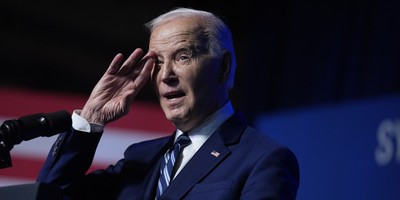Thirty Years Later, a Return to Stagflation
By Representative PAUL D. RYAN
Congress has made a terrible mistake. Amid a rhetorical debate centered on words like “crisis,” “emergency” and “catastrophe,” it acted too fast. While arguments were made about the stimulus bill’s specific components — taxpayer money for condoms, new green cars and golf carts for federal bureaucrats, another round of rebate checks — its more dangerous consequences were overlooked. And now the package threatens a return to the kind of stagflation last seen in the 1970s.
To get a sense of the pressures ahead, we must first assess our fiscal health. We started this year with a projected trillion-dollar budget deficit for the 2009 fiscal year. In 2008, we spent $451 billion just to pay the interest on our debt.
With the stimulus bill now becoming law, we’re digging even deeper into debt. The headline price tag of $787 billion doesn’t include the extra $348 billion it will take to finance the new debt, or what it will cost when Congress extends the spending programs in the bill, as is likely — as much as $2 trillion more. Add in the billions that are being used to prop up the financial system, and when the dust settles on 2009, with millions of baby boomers retiring and entitlement spending exploding, taxpayers will face a financial nightmare.
From a global perspective, the picture only looks worse. As we have debated how much money to borrow and spend in hopes of jump-starting our economy, we’ve ignored the worldwide stimulus binge. China, Europe and Japan are all spending hundreds of billions of dollars they don’t have in hopes of speeding up their economies, too. That means the very countries we have relied on to buy our bonds, notably China and Japan, are now putting their own bonds on the global credit markets.
American Treasury bonds have been selling briskly on the global credit markets because they have been the calm in the storm of the global credit crisis. This has allowed advocates of borrow-and-spend to argue that for the United States, borrowing is uniquely cheap. But what happens when there is an excess supply of bonds on the worldwide markets? The cost of borrowing will rise. Today we fear deflation, but eventually our fears will turn to inflation.
Recommended
It seems that no one in Washington is discussing what happens when the world begins this gargantuan borrowing spree. How high will interest rates rise? And more fundamentally, who will have the money to buy our bonds? It is possible that the Federal Reserve will succumb to pressure to “monetize” our debt — that is, print new money to buy our bonds. In fact, the Fed is already suggesting that it will buy long-term Treasury securities in order to lower borrowing costs. If it does, then our money supply, which has already increased substantially over the past year, will grow even faster.
As Milton Friedman noted, “Inflation is always and everywhere a monetary phenomenon.” It is a situation in which too few goods are being chased by too much money.
To American families, inflation is a destroyer of savings, a killer of wealth, a crusher of confidence. It calls into question the value of our money. And while we all share in the pain, the people whom inflation hits hardest are elderly people who live on fixed incomes, those in the middle class who are struggling to save for retirement and college and lower-income people who live paycheck to paycheck.
Combine high inflation and high unemployment and you have stagflation. Hindsight shows how the pain of the late 1970s and early 1980s could have been avoided, yet we’re now again planning to borrow and spend — and raise taxes — as President Jimmy Carter did. Soon we may again find ourselves watching a rising “misery index” of inflation and unemployment together. If that happens, individual earning power will evaporate, and our standard of living will decline.
To prevent stagflation, we should enact fiscal policy reforms that apply the lessons we learned from the 1970s. Keynesian stimuli based on borrowing and spending have not worked and will not work. One-time rebate checks do not increase the incentive to expand business operations and create jobs. But marginal cuts in tax rates do. We also must lower our job-killing corporate income tax rate, the highest in the industrialized world after Japan, and ease business worries by making it clear that there will be no tax increases in 2010.
We should also re-establish the sound dollar. For the past decade, the Federal Reserve has manipulated interest rates and vastly over-expanded the money supply — and in so doing fueled the housing bubble that precipitated our current crisis. To end uncertainty about the economy, to keep interest rates down, and to give Americans the confidence they need to take risks and ensure future growth, we should make price stability a priority, guaranteeing the value of the dollar.
Finally, we should tackle the entitlement crisis, which will be a $56 trillion liability that we have not figured out how to pay for. As members of the baby boom generation retire, and health care costs continue to spiral out of control, Social Security, Medicare and Medicaid will collapse. By reforming those programs and bringing their costs down to sustainable levels, we will show the world and the credit markets we are serious about reducing our debt. Then our credit will improve, the cost of necessary borrowing will drop, and we can stave off stagflation.
Paul D. Ryan is a Republican representative from Wisconsin, and the Ranking Member on the House Committee on the Budget























Join the conversation as a VIP Member